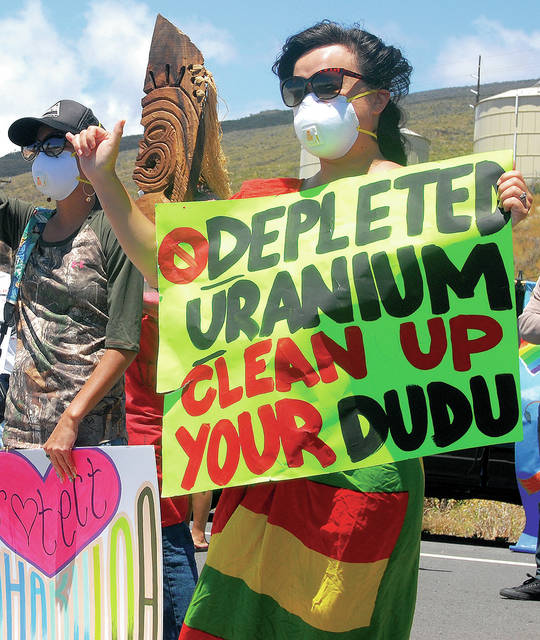HILO — Every two years, the U.S. Army Garrison-Hawaii puts out a public notice seeking citizens to join a board to promote community involvement in the Army’s environmental restoration efforts at Pohakuloa Training Area. ADVERTISING HILO — Every two years,
HILO — Every two years, the U.S. Army Garrison-Hawaii puts out a public notice seeking citizens to join a board to promote community involvement in the Army’s environmental restoration efforts at Pohakuloa Training Area.
The usual response? Crickets.
That’s rather unexpected, considering the persistent vocal interest in PTA’s handling of depleted uranium, a dense, weakly radioactive metal alloy, that was used in the Davy Crockett weapons program in the 1960s. Consultation meetings on cultural and historic sites have also drawn crowds.
The Army is trying again, with its latest solicitation published July 30 in local newspapers. Responses are due Tuesday.
Interested members of the public can find out more and ask to join by calling or emailing USAG-HI Directorate of Public Works Carrie Nelson at 656-3092 or carrie.nelson.civ@mail.mil
The Restoration Advisory Board, called RAB, is not strictly focused on DU. Instead, it’s tasked with providing input to environmental restoration issues, evaluating and commenting on project documents, recommending priorities among sites and projects, and applicable standards for cleanup.
The rules require the board to have a diverse membership, including people from different geographic areas, vocations and interests. Community interest two years ago translated into fewer than five responses to the public solicitation, short of the minimum needed for a board to be formed. So far this year, four people have responded.
“Potential members should represent the community and diverse interests, so no one particular stakeholder or group overwhelms the process,” said PTA Public Affairs Officer Eric Hamilton. “More emphasis is placed on the diversity an individual brings to the RAB, and that person’s expressed commitment toward achieving the RAB’s goals, rather than experience.”
Jim Albertini, an activist who’s tried to intervene in various DU-related licenses and plans, said he asked shortly after the notice came out to join the board but has heard no response.
“The military has a lot of work to do to clean up the environmental mess they have made at Pohakuloa, especially DU contamination, before their lease expires in 2029,” Albertini said.
A Restoration Advisory Board is not always established. The decision whether to form a RAB is made by the garrison commander based on the level of community interest in the project.
“A progressive and successful public involvement program prevents delays and assists, rather than deters, the project,” the project’s website, https://www.garrison.hawaii.army.mil/mmrp/rab_info.htm, says.
RAB members include representatives from the U.S. Army Environmental Command or Army installation, local community, U.S. Environmental Protection Agency, state environmental regulatory agencies and local government. The commander or his delegate is the only military representative on the board and serves as its co-chair.
Once people respond to a solicitation, a committee is formed to select members. The garrison commander has the authority to dismiss or accept the entire board, but can’t pick and choose from individuals.



